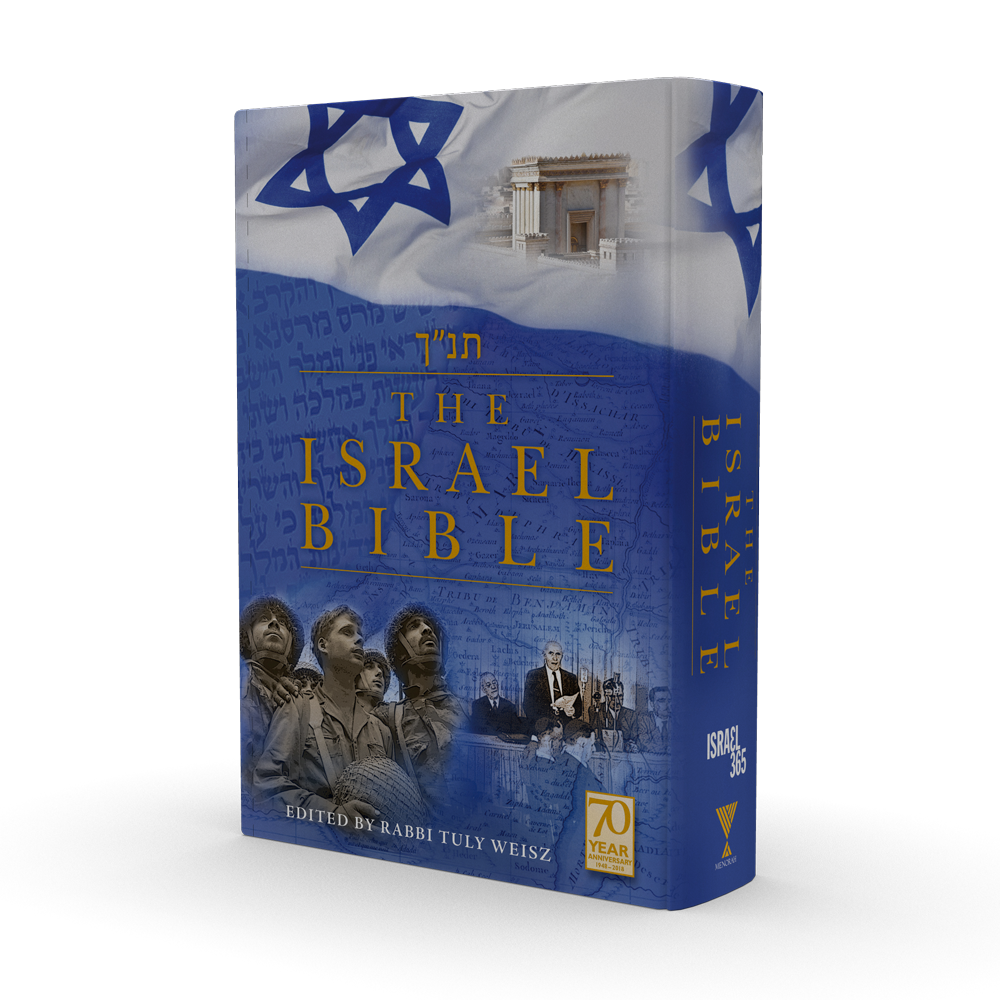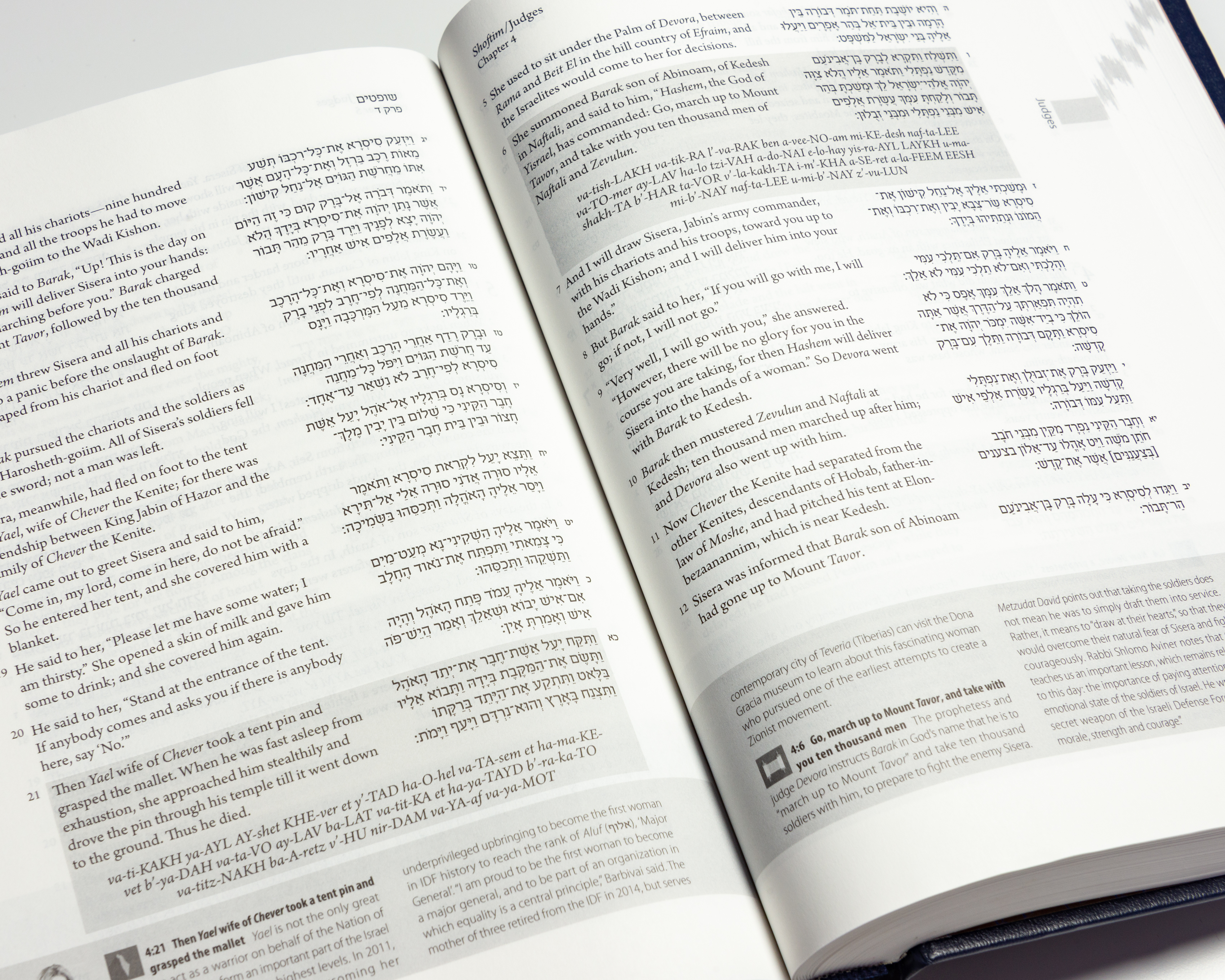Faith: August 2018 Archives

A little break from the political:
I was intrigued a couple of months ago to receive an email announcing a new study edition of the Scriptures with notes highlighting the relationship between the land and people of Israel.
The Israel Bible, published by Israel365 and Menorah Books (an imprint of Koren Publishers Jerusalem) is the world's first Bible centered around the Land of Israel, the People of Israel, and the dynamic relationship between them. Designed for both Jewish and non-Jewish readers alike, The Israel Bible offers a unique commentary that seeks to explain God's focus on the Land of Israel alongside the original Hebrew text and the New Jewish Publication Society translation. All 929 chapters highlight verses that relate to Israel, including relevant quotes and perspectives from prime ministers, as well as abundant maps, charts, and illustrations."We are thrilled that The Israel Bible has reached No. 1 on Amazon in these categories," said Matthew Miller, publisher of Menorah Books. "Its success shows that across the religious and denominational spectrum, people are thirsty to study from a modern edition of Tanakh, and even more so, are deeply curious about the connection between the Jewish People and Israel."
Rabbi Tuly Weisz, founder and CEO of Israel365 and the editor of the Israel Bible, said Jews teaching the world Tanakh is a core Jewish concept that can be found in the Book of Isaiah, chapter 2. Isaiah describes that in the end of days, the nations will stream up to Jerusalem for Torah "shall come forth from Zion, The word of Hashem from Yerushalayim" (Isaiah 2:3).
"A new Bible coming forth from Israel and sending the light of Torah into the world is the embodiment of Isaiah's prophecy," Weisz said. "It is clearly a Bible whose time has come."
Weisz said the Bible has been a source of division between Jews and Christians for a millennium. He said that today the Bible is becoming the point that connects Jews and Christians. His Bible, he said, should build a bridge between Jews and the nations.
"The Bible and Israel are what Jews and Christians have in common," he said.
I sent a reply requesting a review copy and received one, gratis, shortly thereafter.
As a book, The Israel Bible is impressive, a hardcover tome weighing in at nearly 2200 pages, with a dustcover featuring illustrations of the flag of Israel, the Temple, the leaders declaring Israel's independence at Tel Aviv in 1948, and the famous photo of awed Israeli soldiers entering the Old City of Jerusalem after liberating it in 1967.
For the Christian reader, The Israel Bible offers the interesting experience of encountering the Hebrew Scriptures as the Jewish people do. The books are arranged in the standard Hebrew order, read "back to front," beginning with the Torah (Five Books of Moses), the Neviim (Prophets, which include most of the books Christians typically categorize as history, such as Joshua and Samuel), and the Ketuvim (Writings, which include Psalms, Proverbs, Job, Song of Songs, Ruth, Lamentations, Ecclesiastes, Esther, Daniel, Ezra and Nehemiah, and Chronicles).
The front matter includes an overview and introduction; a chart of the Hebrew alphabet, which includes final forms of certain letters, numerical values, and vowels; a list of each week's Torah portion with the corresponding Haftarah reading from the Prophets and the Hebrew word by which the portion is known; a list of the Torah readings for holy days and special occasions; and the blessings for before and after reading the Torah, provided in Hebrew, transliterated Hebrew, and English; and a table of maps, charts, and lists.
These maps, charts, and lists often appear with the introduction to a specific book. Many of the maps are like those you've seen in English Bibles -- the territories of the tribes of Israel, the two kingdoms of Israel and Judah -- and some that were new to me. For example, a map the shows the places mentioned in the commentary for Psalms, another shows the places mentioned in the Song of Songs, and the book of Ruth has a map showing Beit-Lechem (Bethlehem) and Moab. Lists include rabbinical opinions of when Job lived and opinions about when Solomon wrote his books. With Leviticus, there is a chart showing the offerings that would be brought by an individual.

As for the Biblical text itself, each book begins with a brief introduction. The text is presented in Hebrew and in English, from the Jewish Publication Society edition of 1985. On many pages, a verse is highlighted in gray accompanied by transliterated Hebrew, indicating commentary at the bottom of the page. The selected verses typically are chosen to highlight something about the land of Israel mentioned in the text or to link the text to later historical events. Some of the commentary is from renowned rabbis of the past.
Some commentary ties the selected verse to events in the history of the modern State of Israel. For example, Exodus 9:1, when the Lord calls Moses to go to Pharaoh and say, "Let My people go to worship Me," has commentary discussing modern day bondage suffered by the children of Israel:
Unfortunately, the bondage of Jews was not limited to the period of slavery in Egypt. There have been many other such incidents in history, even in the 20th and 21st centuries. Golda Meir (1898-1978), while serving as Israel's first ambassador to the Soviet Union, worked tirelessly to facilitate the immigration to Israel of Jews trapped behind the "Iron Curtain." Upon her arrival, some 50,000 Jews greeted Golda for the Shabbat, despite fear of the Soviet regime. She was astonished. "I prayed to gether with them. Oh, how I prayed. I was caught up in a torrent of love so strong it literally took my breath away!" The 10,000 old Israeli shekel banknote, followed by the first 10 New Israeli Shekel banknote, honored Golda Meir with her image on one side and on the other, an illustration of the mass of Russian Jews and the expression, taken from this verse, "Let My people go."
The Israel Bible is easy to navigate (once you know where to look for the books). Printed tabs along the edge of the page make it easy to find a particular book, and the head of each page has the book and chapter in Hebrew and English, as well as the Torah portion name.
At the back of the book are biographical sketches of the contributors to The Israel Bible, descriptions of the scholars and historical figures mentioned in the commentary, and an index to the people, places, and concepts discussed.
The list of transliterated Hebrew names and terms (shown in italics in the English translation of Scripture) is especially helpful to this gentile reader, to be able to look up Yechezkel and see how it's pronounced in Hebrew (y'-khez-KAYL) and that it's the name we see translated in English editions of the Bible as Ezekiel. A section is devoted to the names of Biblical measurements and Jewish holidays.
While I can think of some improvements -- more color, more maps, modern day photos of the places described -- The Israel Bible is a resource that I enjoy browsing through and am happy to have in our home, as a way of seeing the Old Testament through different cultural lenses, both ancient and modern.